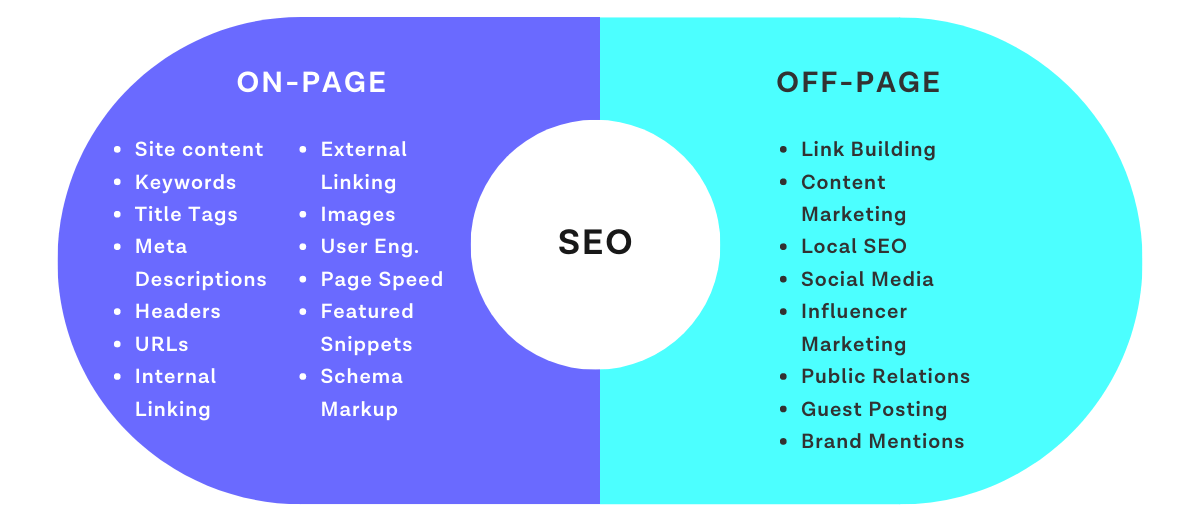A Beginner’s Guide to On-Page and Off-Page SEO: Boost Your Website the Right Way
If you’re new to the world of digital marketing or just trying to get your website noticed, you’ve probably heard the term "SEO" thrown around a lot. SEO, or Search Engine Optimization, is like the magic wand that helps your website show up on Google when people search for something you offer. But here’s the thing—it’s not just one trick. SEO is split into two big categories: on-page SEO and off-page SEO. Don’t worry if that sounds confusing; I’m here to break it down for you in simple terms so you can start boosting your site like a pro.
What Is On-Page SEO?
Let’s start with on-page SEO. This is everything you do on your website to make it more appealing to search engines like Google. Think of it as tidying up your house before guests arrive—you want it to look good, feel welcoming, and be easy to navigate. Here’s what you need to focus on:
- Keywords Are Your Best Friend
Keywords are the words or phrases people type into Google. If you run a bakery, words like “fresh cakes near me” or “best cupcakes” might be your keywords. The trick is to sprinkle these naturally into your content—your homepage, blog posts, product pages, everywhere! But don’t overdo it; Google’s smart enough to notice if you’re stuffing keywords like a Thanksgiving turkey. - Write Awesome Content
Content is king, and I’m not just saying that because it sounds cool. Write stuff that’s helpful, interesting, and answers what your audience is asking. If someone searches “how to bake a chocolate cake,” give them a step-by-step guide with tips they won’t find everywhere else. Keep it readable—short paragraphs, bullet points, and a friendly tone go a long way. - Titles and Headings Matter
Your page title (that little text at the top of your browser tab) should include your main keyword and be catchy. Same goes for headings (like H1, H2 tags). They help Google understand what your page is about and make it easier for readers to skim. - Speed Up Your Site
Nobody likes a slow website—not your visitors, and definitely not Google. Use tools like Google PageSpeed Insights to check how fast your site loads and fix anything slowing it down, like big images or clunky code. - Make It Mobile-Friendly
Most people browse on their phones these days. If your site looks wonky on a smartphone, you’re losing points with both users and search engines. Test it out on your phone and tweak it until it’s smooth.
What Is Off-Page SEO?
Now, let’s step outside your website for off-page SEO. This is all about building your site’s reputation and authority in the online world. It’s like getting people to vouch for you—it shows Google your site is trustworthy. Here’s how to tackle it:
- Backlinks Are Gold
A backlink is when another website links to yours. It’s like a vote of confidence. The more quality sites link to you, the better Google thinks you are. Reach out to bloggers, write guest posts, or create shareable content (like infographics) to earn these links naturally. Avoid shady “buy backlinks” schemes—Google hates that. - Social Media Buzz
Sharing your content on platforms like Instagram, Twitter, or Facebook doesn’t directly boost your ranking, but it gets eyes on your site. More traffic and shares can lead to backlinks and brand recognition, which do help your SEO. - Online Reputation
What people say about you online matters. Encourage happy customers to leave reviews on Google My Business or Yelp. Respond to feedback—good or bad—to show you’re engaged. A strong reputation signals trustworthiness to search engines. - Local SEO (If You’re a Local Business)
If you’ve got a physical location, like a coffee shop or store, off-page SEO includes getting listed on directories like Google Maps or local business listings. Make sure your name, address, and phone number are consistent everywhere.
How They Work Together
Here’s the cool part: on-page and off-page SEO aren’t separate islands—they team up to lift your site higher in search results. Great content (on-page) might get shared or linked to (off-page), which brings more visitors, which tells Google your site’s worth ranking. It’s a cycle that keeps growing if you do it right.
Where to Start?
If you’re a beginner, don’t stress about doing everything at once. For on-page, pick a page (like your homepage), find a keyword, and optimize it with good content and a solid title. For off-page, share that page on social media and maybe reach out to a friend with a blog for a link. Use free tools like Google Keyword Planner or Ubersuggest to find keywords, and keep an eye on your progress with Google Analytics.
SEO takes time—it’s not an overnight fix. But with a little effort on both on-page and off-page, you’ll start seeing your website climb the ranks. So, roll up your sleeves, have fun with it, and watch your online presence grow.


Comments
Post a Comment